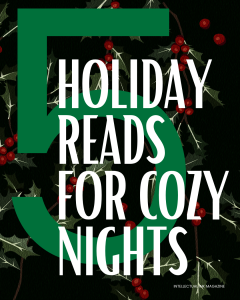Breaking into YA Fiction: How to Write, Position, and Sell Stories That Stick
4 min read
The Allure and the Trap of YA Fiction
Young Adult fiction is one of the most emotionally charged, commercially vibrant, and fiercely competitive genres in publishing. It is where readers fall in love for the first time, question authority, find their voices, and imagine new worlds. But breaking into YA is not just about writing for teens. It is about understanding why they read.
Too many writers enter the YA space chasing trends or nostalgia. The real key to breaking in is clarity: knowing what you stand for, who you are writing to, and how to deliver stories that speak to both heart and hustle.
Step 1: Understand What YA Really Is
YA is not a reading level. It is a perspective.
Protagonists are typically between 15 and 19, but the emotional arc matters more than the age. The hallmark of YA storytelling is transformation: identity, first love, rebellion, survival, belonging.
Think of it like this:
Middle Grade asks, “Who am I?”
YA asks, “Who do I want to become, and what will it cost me?”
YA readers crave honesty, not perfection. They will forgive rough edges, but they will not forgive inauthenticity.
Step 2: Find Your Subgenre and Your Edge
Before you draft a single scene, define your lane. The YA market has distinct ecosystems:
Contemporary Realism: Think Angie Thomas (The Hate U Give) or Elizabeth Acevedo (The Poet X).
Fantasy: Leigh Bardugo, Sabaa Tahir, or Tomi Adeyemi (Children of Blood and Bone).
Science Fiction and Dystopian: Suzanne Collins, Marie Lu, Neal Shusterman.
Romance: Nicola Yoon (Everything, Everything), Jenny Han (To All the Boys I Have Loved Before).
Speculative or Horror: Tiffany D. Jackson (White Smoke), Ryan Douglass (The Taking of Jake Livingston).
Your goal is to blend something familiar with something only you could write.
Ask yourself, “What is missing in YA that my voice can give?”
Step 3: Master the Emotional Engine
YA stories run on emotional urgency.
Forget flowery description or grand philosophy. What matters is how it feels. Every chapter should pulse with tension or discovery.
To test your work:
If the protagonist is not forced to make a hard choice by page 10, raise the stakes.
If your dialogue sounds like an adult remembering being a teen, cut it.
If your story could work the same with a 30-year-old protagonist, it is not YA. It is adult fiction pretending to be YA.
Step 4: Build Your Credibility Before You Pitch
Breaking in means building visibility before you publish. Start where your readers are:
Post short fiction or serialized chapters on Wattpad, Medium, or Substack.
Join YA writing communities on Discord, Twitter/X, or Reddit’s r/YAwriters.
Read and review other YA books. Publishing professionals notice active voices in their ecosystem.
When you are ready, submit to anthologies, literary magazines, and contests like Author Mentor Match or #DVPit.
Step 5: Get Representation or Go Indie
Traditional Path
Research agents using Manuscript Wish List (MSWL) and Publisher’s Marketplace.
Polish a strong query letter that clearly states genre, audience, and comparable titles.
Avoid generic comparisons such as “like The Hunger Games.” Aim for tone and market position instead. For example, “an Afro-futurist thriller for fans of Tomi Adeyemi and Neal Shusterman.”
Indie or Hybrid Path
Publish your first book independently while building an email list.
Consider a small press such as CamCat, Entangled Teen, or Flux.
Focus your marketing on BookTok, Bookstagram, and your newsletter.
Step 6: Treat YA Like a Career, Not a Moment
Breaking in is the beginning, not the victory lap. Editors and agents want writers with staying power.
Outline the next two books before you sell the first.
Maintain a professional author website and consistent brand voice.
Keep engaging your audience between releases with essays, playlists, or short fiction.
A single debut might open the door, but consistency keeps you in the room.
Alternative Perspective: The Indie Revolution
Some of the best YA voices of the past five years came from outside traditional pipelines. Indie publishing gives you full creative control, faster timelines, and direct access to your readers. But it also demands business savvy. Marketing, cover design, and analytics are as vital as prose.
If you already run a creative brand such as a podcast or magazine, you are sitting on a marketing machine most debut authors wish they had. Package your YA launch like an event: trailers, playlists, interviews, and live readings. Make your fiction feel like a movement.
The Real Secret
YA readers do not want perfection. They want permission.
Permission to feel messy, to hope again, to rage at the world, and still believe in something bigger.
If your story gives them that, you are not just breaking into YA. You are building a bridge to the next generation of dreamers






